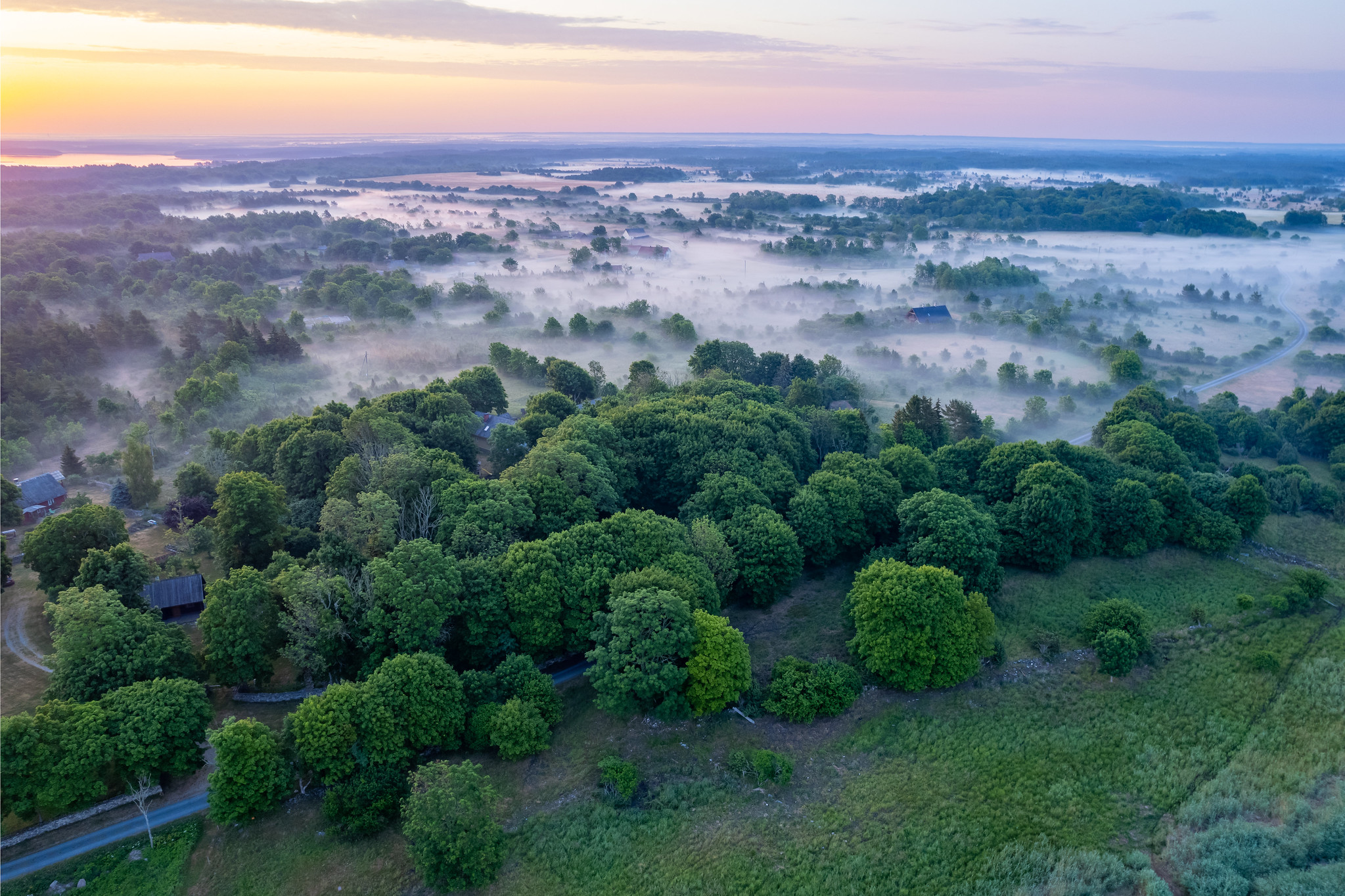A growing concern about the quality of landscapes and insufficient measures for landscape management led the European Conference of Local and Regional Authorities to approve the proposal to develop a landscape convention draft in 1994. After years of preparation, the European Landscape Convention was adopted in Florence on 20 October 2000. The convention entered into force four years later, when it was ratified by 10 countries.
Estonia and the landscape convention. We can proudly speak of long-standing and successful traditions of landscape conservation and planning in Estonia. Ecological network principles were already being applied in Estonia in the 60s and 70s when efforts were made to create order in the use and planning of our natural resources. Despite the outstanding achievements of the recent past, we are currently facing the same problems as many European regions: the landscape as a symbol of local identity is slowly fading, its quality is decreasing, etc.
Estonia is one of the most recent countries to join the landscape convention. In 2015, a task force was created at the Ministry of the Environment (now the Ministry of Climate) to prepare for joining the convention. The task force analysed how well Estonia is following the principles and reaching the goals of the convention and what needs to be improved. The committee acknowledged that when it comes to nature conservation and planning, landscape plays an important role in Estonia’s environmental and nature conservation strategy and daily work. Regardless of our efforts, the measures of the landscape policy have proven to be inadequate at the local level, so additional measures must be introduced. On 2 November 2017, the Estonian government approved the European Landscape Convention and gave the authority to join it. Estonia has been a member of the convention since 1 July 2018. Joining the convention was definitely an important step for Estonia: it shows that we support the principles and goals of the European Landscape Convention.

The basis and key ideas of the convention. The European Landscape Convention is the first international agreement that focuses on landscapes. The main goal of the agreement is to improve the quality of landscapes. It combines the objectives of environmentalists and cultural heritage conservationists and emphasises the importance of valuing and preserving natural and cultural heritage. The Convention treats all landscapes equally, regardless of whether it is a natural, urban or peri-urban area; a mainland or a body of water; a significant and valuable area or an everyday area or even a damaged landscape.
The member countries of the convention are obliged to ensure landscape protection, management and planning. Joining the agreement does not set any new obligations or limitations on member countries, but gives them the opportunity to pay more attention to landscapes or, more broadly, to the entire living environment.
The definition of ‘landscape’ is also important. The convention defines ‘landscape’ as an area of land as perceived by local people or visitors whose character is the combined result of action and interaction of natural and/or human factors. This definition reflects the idea of the landscape constantly changing due to various factors and the need to consider it as a whole rather than as individual components. Even though the term has been mentioned in the Estonian constitution and in sectoral legislation, no uniform definition had been provided until then and the approach to the term varied significantly across sectors. This is also one of the reasons why it has been very important for Estonia to join the convention.
Who is responsible for landscape conservation? Each member country implements the convention according to its distribution of power, constitutional principles and legislation. Its practical guidelines must be carried out in cooperation with all sectors involved in shaping and changing the landscape from the individual to the national level. The convention emphasises the importance of local authorities in landscape protection, planning and management. Local governments play a major role in organising spatial planning.
Areas of concern in implementing the convention. Landscape-related objectives are well defined in Estonian legislation, strategies and planning, but it is difficult to achieve them. The state has inadequate mechanisms to fund and implement these goals and the cooperation between different levels and fields is insufficient. One of the main problems is poor inclusion and communication. There are also issues with spatial planning, the assessment of environmental effects, forestry and other nature-related fields. The cooperation between different fields is insufficient. The main problem of Estonian rural landscapes is probably the depopulation of rural areas and peripherisation. Without people, there would be nobody to use and shape the landscape, not to mention to preserve and restore valuable landscapes. For this reason, the quality of landscapes largely depends on regional policy.
What’s next? A working group for coordinating the activities of the convention has been established at the Ministry of the Environment (now the Ministry of Climate). The working group has approved the action plan for the coming years. The main goals of the action plan include raising society’s awareness on the topic, promoting the cooperation and inclusion of different fields, improving implementation and financing methods, developing expertise on spatial development in local governments, updating planning methodologies, etc.
See the full article in the March 2021 issue of Eesti Loodus (Estonian Nature), pp 22-26
Author: Kalev Sepp, Professor of Environmental Protection and Landscape Management at the Estonian University of Life Sciences
Editor: Reigo Roasto